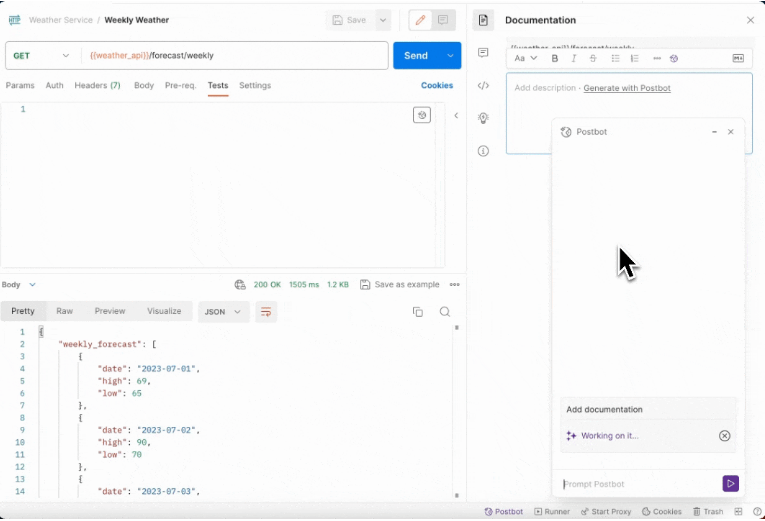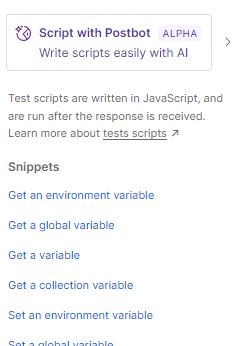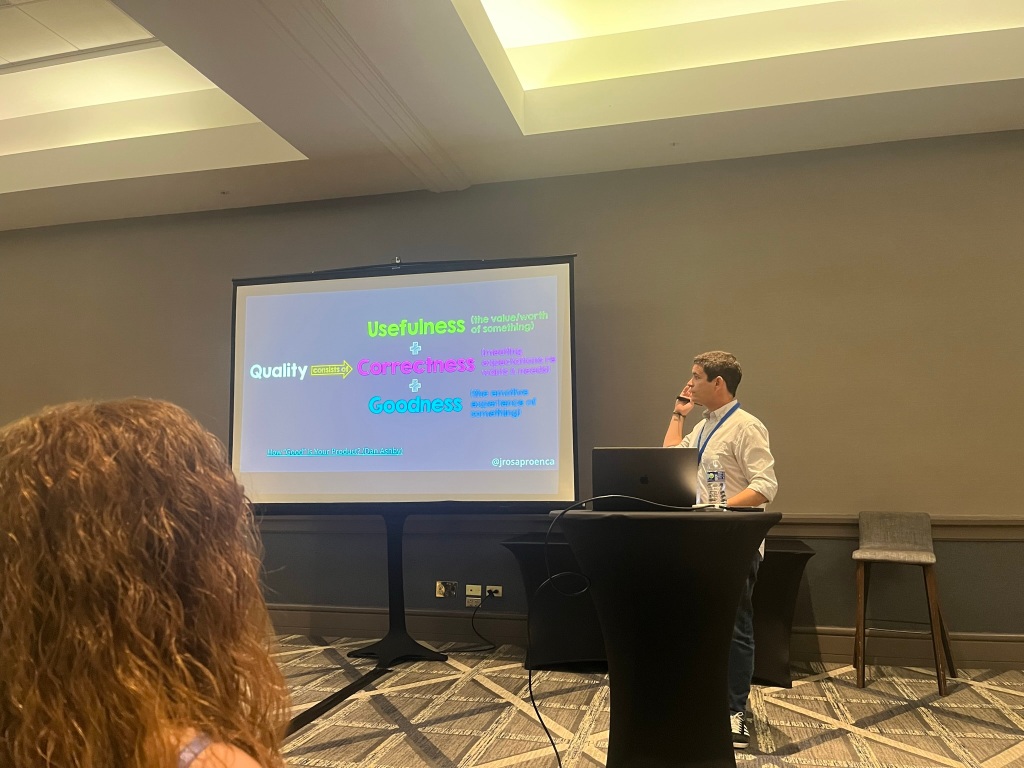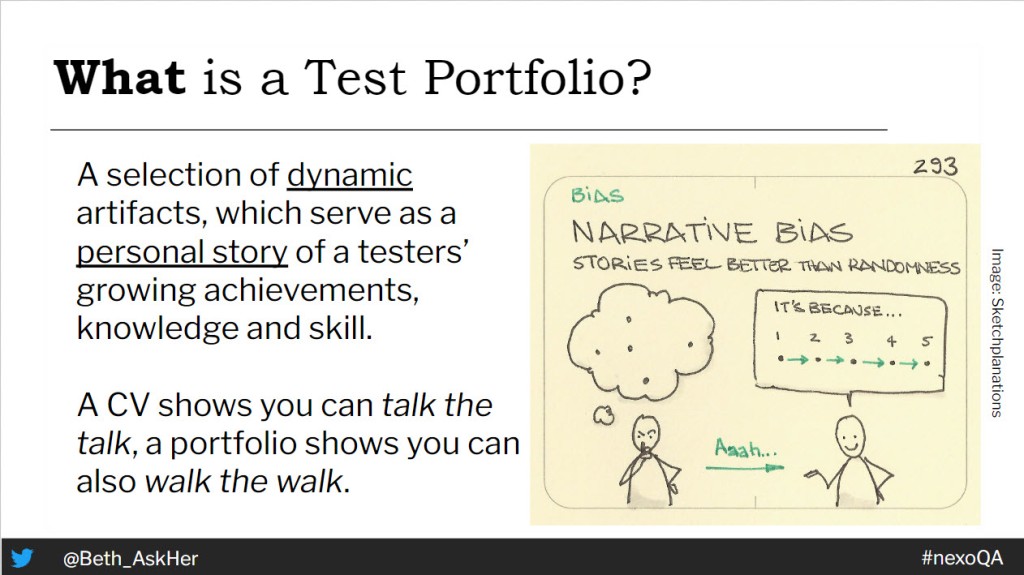Hello! I recently wrote a post about 5 Ways Postman’s Postbot AI Can Help Your Testing, and as we know, the world of AI moves fast. So fast, that Postman’s Postbot has spread its electrical wings and flown to other area’s of the Postman platform.
Want to understand the latest release (November 2023) and how Postbot can help you anywhere in Postman? Below I’ve listed all five of the areas which AI is baked into Postman currently, including where to find them and what features you can get from each of them. For giggles I’ve also given them a name, cos that’s just the sort of girl I am 😁 #anthropomorphismFTW
- Workspace/General: DocuBot
- Collections/Generate Tests: Testbot
- Tests Tab for Individual Request : PromptBot
- Flows/Evaluate Block: CodeBot
- Generate Documentation: DocuBot
- Summary
answerBot 🧾
Workspace/General
Where does it live?
You can find Postbot anywhere in your workspace by clicking the Postbot icon

in the bottom right hand of the Postman app.

What Can It Do?
This is where you can use Postbot as an assistant, to answer questions from the Postman documentation without you having to leave and go elsewhere.
Some example prompts you might want to enter here could be:-
- Ask for help on a Postman feature: e.g. Can you tell me how Postman Flows works?

2. Ask it a follow up question : e.g. Do you have some example Flows I can see?

Testbot 🧪
Collections/Generate Tests
Where Does It Live?
You can find it by clicking the three dot menu next to the collection name and selecting “Generate Tests”. Note this option isn’t currently available from sub-collection folders, its either collection level or individual test level only.

What Can It Do?
You can use the “Generate Tests” feature to quickly spin up test cases for every endpoint in your collection. Here are some tips that might help:-

Promptbot ✅
Tests Tab for Individual Request
Where Does It Live?
You’ll find Postbot where the snippets live, within the Tests tab for an individual request.

What Can It Do?
This feature is a little more developed than the others, and provides some pre-set prompts (think of them just like the snippets) to get you started quickly. Note because the Postbot uses NLP, you can always select a prompt, then tweak using customised follow up messages to get the answer you’re looking for.
Several features are available, including:-
- Auto-generate tests
- Visualise the response (e.g. great a graph or chart to visually show your response data in a more digestible format)
- Save a field from a response (e.g. quickly set an environment variable from response body data)
- Fix the tests you have (maybe the code isn’t quite right but you can’t figure out why)
- Add more tests (bear in mind the tips above – don’t assume this is going to automatically give you what you need, but as an inspiration provider it could be useful).
Codebot 👨🏽💻
Flows/Evaluate Block
Where does it live?
You can find the Postbot for Flows by selecting an Evaluate block and adding it to a Flow. When you click the purple Flows icon, you can enter your prompt.

What Can It Do?
This Postbot can help you with the coding side of things. Instead of learning Flows Query Language, you can try prompting Postbot to write an evaluation query for you. Moving you one step closer to no/low code implementation, even for more complex queries.
In this example, I’m using the Mailinator API to retrieve an email inbox, and count the number of messages it contains:-

Docubot 📃
Documentation Tab
Where does it live?
You can find the Postbot for Documentation by clicking Documents at the right hand side of an API endpoint.

What Can It Do?
This Postbot can take the task that so many API developers struggle to complete, one of the most common complaints people have when trying to consume an API: Documentation. It can read your API and generate useful documentation – or at least a draft which has done a lot of the heavy lifting that you can review and make tweaks to. A lot easier than starting from scratch, no?
Take a look at Postman’s latest blog post to find out more: https://blog.postman.com/docs-with-postbot/.
Summary
Postman are working AI into their platform at pace – I suspect this blog post itself will be out of date possibly within a few weeks. But currently, there are 5 different places you can go to within Postman (desktop and browser apps, Postbot isn’t in the VSCode extension, yet!). All of these implementations can be thought of as different bots, to help with different tasks.
Hope this helps you. And just a reminder, I don’t work for Postman, and I don’t get paid in any way shape or form to give you this information. I figure its a useful mental shortcut I can use in future in a tool that I like, and if it helps me then with any luck it could help you too!
































